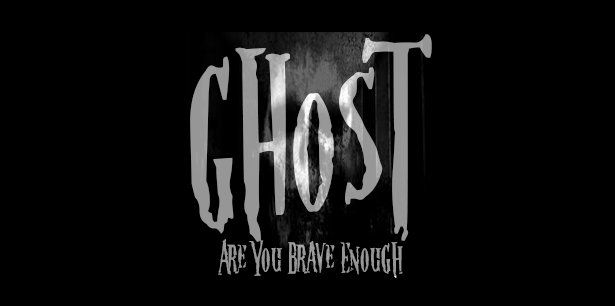Whispers of the Other Side: Haunting Gaze of the Fort Horsted Child
- Gary Taylor-Green
- Sep 11, 2023
- 4 min read

In the mist-laden depths of the past, a tapestry of dread and fascination unfurled across the haunted ramparts of Rochester's Fort Horsted. Ghost hunters, a brave breed of seekers, dared to peel back the veil between realms, capturing more than they bargained for. Goose pimples danced like macabre whispers across their flesh as they confronted the lingering spirits of history.
In the mid-1800s, while the United Kingdom was gripped by the territorial shadows cast by Emperor Napoleon III of France and the looming might of Imperial Germany, an eerie sense of anticipation crept through the land. This unease birthed a Royal Commission in 1859, a sentinel force assigned to assess the realm's defenses and echo its findings in the hallowed chambers of parliament, a dark symphony that reached a crescendo in 1860.
From the fevered reverberations of that Commission emerged a decree that gave birth to five fortress sentinels, guardians of Chatham's Eastern flank, and the heart of strategic power, Chatham dockyard. Darland, Twydall, Luton, Horsted, and Bridgewoods, each a sentinel of stone, became the bulwark against an encroaching abyss. But shadows divided military minds, whispers suggesting these ramparts might be nothing more than Palmerston's folly, homage to a Prime Minister's conceit.
Thus began the construction, the labors of the living intertwining with the legacy of the damned. In 1880, the foundations of Fort Horsted emerged from the sweat-soaked hands of convicts, their toil overseen by Royal Engineers, like sorcerers weaving spells of concrete and timber. The central tunnel, a yawning passage into darkness, materialized from brick and form, concrete shrouding the past in an eternal embrace. The moat, a chasm of history, was excavated, chalk and flint piled high in silent communion with the void.
Yet, as night's shroud deepened, it wasn't bricks and mortar that beckoned the gaze of the living, but the specter of armaments. A six-sided arrowhead, bristling with the potential for death, awaited its garrison of souls. Eight Howitzers on recoilless carriages, their mouths salivating for doom. Rifled guns, pounders and launchers, poised like guardians from a world beyond. The arsenal fed by secret caches, a dance of hoists and dark rooms, orchestrating death's choreography. A symphony of artillery and anticipation, holding the line against history's incursion.
Then came the chilling test, a spectral skirmish across time's tapestry. On the ominous date of July 1st, 1907, the ring of Forts faced the onslaught of the blue army against the red, a clash devoid of conventional violence. Mining, countermining, and explosives were the weapons, as history's unseen hands played their part. Forts Luton and Bridgewoods succumbed, proving the resilience of the spectral citadels, holding back the tide of aggressors in a ghostly ballet of shadows.
In the decades that followed, the Fort breathed with life of a different ilk. Royal Ordnance Corps and the Royal Artillery took up residence, yet secrets festered beneath the facade, sealed by the enigmatic veil of official secrets. The Fort's soul became a crucible for munitions, its walls echoing with the secrets of wartime whispers.
With World War II, a new kind of weaponry graced its walls, anti-aircraft guns guarding against metal vultures of destruction. September 15th, 1940, a battle in the skies painted with streaks of fiery doom, a symphony of thunderous gunfire against the backdrop of humanity's last stand. The Fort's role continued, yet the clock's hands inexorably marched toward change, the military's embrace of Horsted faltering as the 60s breathed their chill.
And then, the blaze. A conflagration born of the earth's ire, consuming the very heart of Fort Horsted. Flames clawed toward the heavens, devouring history's shelter, painting the sky with apocalyptic hues. Firefighters wrestled with the inferno, a dance of futility against nature's wrath. The flames subsided, revealing a landscape forever altered. Yet, as the embers settled, so did the Fort's fate, the shadows of decay inching forth like a creeping mist.
Amidst this fading grandeur, a peculiar revelation emerged, intertwining the modern with the arcane. The brave souls of Ghost Hunter Tours tread where history and phantoms converged. With ouija board in hand, they beckoned, and in the shadowy embrace of the other side, a child's voice whispered. Letters spelled, affirmation given. A little boy, lost in time, a spectral witness to forgotten days.

It wasn't until the ethereal dance of the night was captured in the cold embrace of technology that the truth unfurled. The image, a photograph birthed from pixels and shadows, revealed the face that had grazed the precipice between worlds. Zooming in, the child's visage emerged, a specter of innocence caught in the camera's gaze, a chilling revelation from a world beyond.
In the aftermath, the hunters grappled with their encounter, the echo of a child's gaze haunting their thoughts. The voice on the Ouija board found its visual counterpart, a union of the arcane and the material. An invisible hand had reached across the void, a touch bridging worlds, and the hunters shuddered at the thought of the boy peering down from the other side, unseen yet palpable.
Ghost Hunter Tours, the torchbearers of the unknown, strive to unravel the enigma, to converse with the forgotten. The haunted ramparts of Fort Horsted become their canvas, each investigation a brushstroke upon the tapestry of history. In the darkness, they listen to the spectral whispers, capturing voices beyond time, faces glimpsed from the nether. As they traverse haunted realms, they beckon the brave to join them, for within the shadows, truth, and terror await those willing to peer into the abyss.










Comments